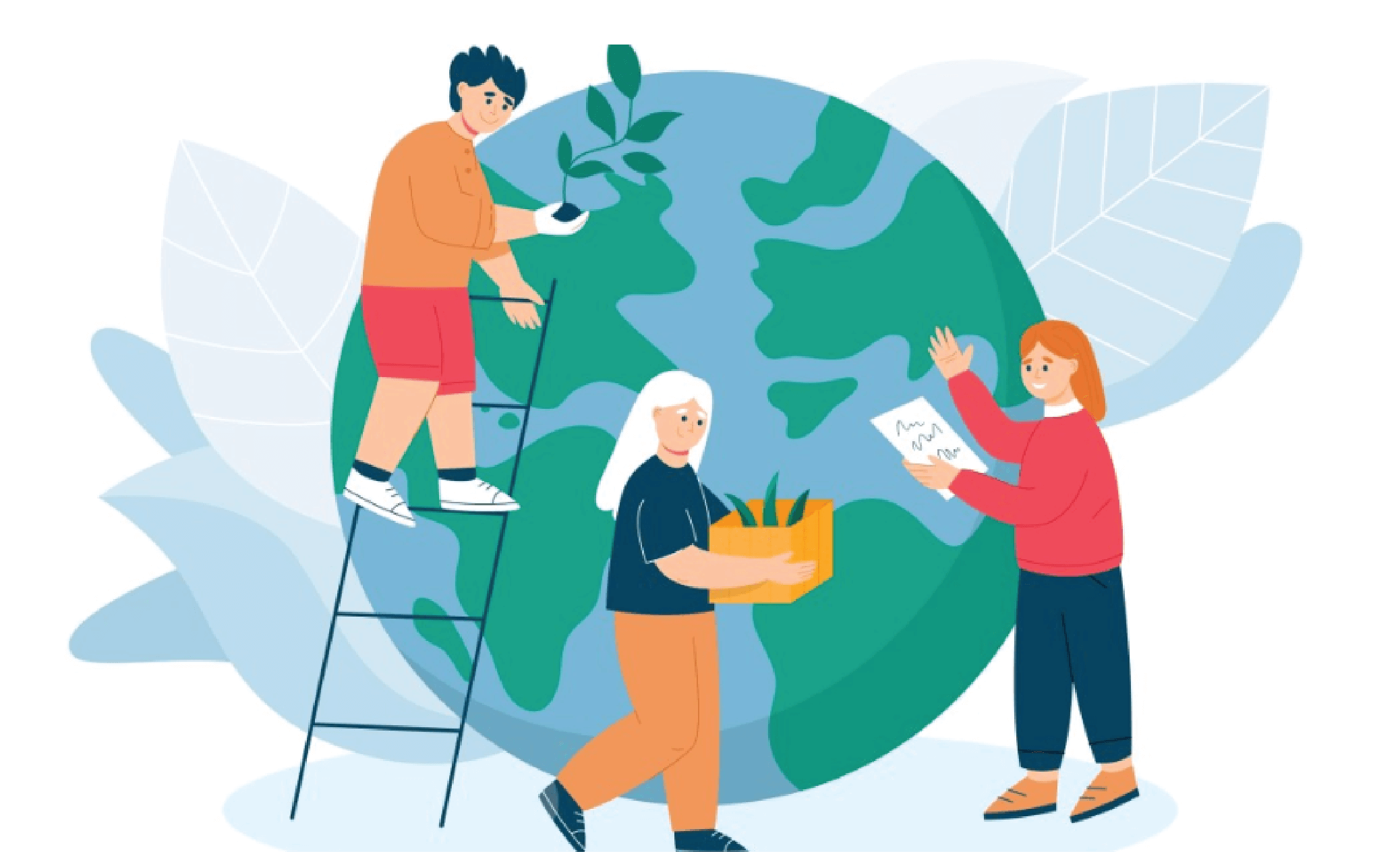The world is a complex place. Should finding solutions to its equally complex problems be a matter for governments, for the private sector, or for philanthropy? Well done if you answered “All of the above”. Caroline Suozzi makes the case.
The world’s toughest challenges — climate, health and healthcare, inequity, education — are escalating at an exponential rate that is hard to ignore. The sweeping effects of these problems have and will permeate every aspect of our society. So, as it becomes increasingly evident that no single sector possesses all the answers or resources, why do we think that complex problems don’t require comprehensive collaboration?
Institutions that neglect to step beyond isolated efforts will exist on the margins of transformation. Now, more than ever, governments and philanthropies must leverage their collective expertise, unique perspectives, and individual talents and capabilities to support meaningful change.
The Nigeria Customs Service recently told the international foundation Wildlife Justice Commission (WJC) that the project “showed them a gold mine of information they just weren’t using before” that resulted in recovering 18 tons of illicitly trafficked wildlife products. The key to success? Cell phones. For this project, WJC put an emphasis on intelligence analysis, which includes taking the cell phones of key offenders when they’re arrested to bring down entire networks instead of just one individual. Though the data shared with the Nigeria Customs Service was deemed a “gold mine”, the proof of this successful collaboration between a government agency and a foundation is equally valuable for its catalytic impact in preventing future wildlife crime.
WJC has become a driving force in dismantling illicit operations and holding perpetrators accountable. Through strategic interventions and persuasive advocacy, WJC not only tackles the immediate threats to biodiversity but also advocates for systemic change on a global scale. Instead of deploying short-term solutions, the organisation has adopted a systemic approach to instigating enduring change. Their goal, as outlined by Executive Director Olivia Swaak-Goldman, is “building the capability and political will for governments to address wildlife crime as serious organised crime”, thereby “driving wildlife criminals out of the shadows and bringing an end to their multibillion-dollar dirty business.”
WJC’s strategy to achieve this goal includes showing governments why they should get involved in the fight against wildlife crime in the first place and a roadmap to success. As Swaak-Goldman aptly puts it, “Once governments get involved, eventually they can solve these problems on their own.” This involves demonstrating small victories early on, to prove that the fight is winnable, spurring politicians into action, as “success breeds success.”

A key component of WJC’s approach is underlining the intersectionality of wildlife crime, understanding that its implications extend far beyond conservation and environmental harm. This intersectionality is the same that permeates any deeply entrenched system.
- Tackling wildlife crime is crucial for crime, security, and stability. Swaak-Goldman asserts that the focus shouldn’t be only on the poachers but also on the kingpins controlling the operations. These individuals often have ties to human and drug trafficking, making this a broader issue of serious organised crime. She notes, “Many of those who are linked to wildlife crime are linked to human and drug trafficking as well.”
- Biodiversity is directly at stake. According to Swaak-Goldman, “vulnerable species are being trafficked to the point of extinction, and our oceans are just being plundered.” For example, every 15 minutes an elephant is killed for its ivory.1
- Effects on climate change are significant. The destruction of forests and marine ecosystems contributes to climate change, exacerbating an already dire global situation. Illegal fishing and fisheries crime especially pose a serious threat to ocean health, while illegal logging destroys habitats and poses other threats to the ecosystem.
- Public health is deeply intertwined with wildlife crime. With three-quarters of emerging infectious diseases being zoonotic, the increase in wildlife crime leads to species coming into contact that would not otherwise, increasing the potential for disease transmission from animals to people. One example of the dire consequences that these zoonotic diseases can have is, of course, SARS-CoV-2, otherwise known as COVID.
- Wildlife crime poses substantial threats to economic stability. A 2019 study by the World Bank2 found that wildlife crime could cost economies between $1 to $2 trillion in lost taxes and revenue. The study also estimates that countries forego approximately “$7-12 billion each year in potential fiscal revenue that aren’t collected due to illegal logging, fishing, and in case instances, wildlife trade”, which significantly hinders economic growth in those areas.
If philanthropy wants to address any of these issues, or any of the converging, escalating challenges that have existed for thousands of years, it cannot act in a vacuum. Cross-sector collaboration is key to change in addressing any major global challenges. In a recent book on Reimagined Philanthropy3, Rockefeller Philanthropy Advisors dives deep into how collaboration between governments and philanthropies leverages collective expertise, resources, and perspectives, making it a strategic tool for navigating and driving meaningful change within complex systems. It says, “by working hand-in-hand with government entities, donors can shape regulations and legislation to address critical social issues, contributing to lasting transformations.” To be clear, collaboration entails taking the time to truly listen to governments and the people of local communities to develop the solutions that will truly solve the problems that people face, instead of imposing an untested approach.
In this spirit, philanthropy shines when it fills the gaps where government and the private sector cannot, to fulfil a public need. A recent example of this happened in New York, where Parks Department-funded swimming lessons are were cut by Mayor Eric Adams. Two City Council members, including the bill’s sponsor, Julie Menin, worked with Jonathan D. Gray, a co-founder of the Gray Foundation, to keep the free swimming lessons programme alive. In an article in The New York Times4, Menin said, “This is a real equity issue, since many low-income communities and communities of colour don’t have access to free pools and swim lessons.” The Times reported that the swimming lessons were “part of a broader effort to prevent children from drowning and to address racial disparities in learning to swim”. While it may seem like a simple fix, this was a major win and a key example of government and philanthropy working to fill a direct need in the community by acting in genuine partnership.
These complex issues can sometimes feel overwhelming and impossible to solve—because no institution or sector can solve them alone. Letʼs start to heal long-standing wounds by working together across different areas and actually making a positive impact in the communities that need it the most.
About the Author
 Caroline Suozzi is Thought Leadership And Content Manager at Rockefeller Philanthropy Advisors, where she develops a variety of educational content based on research, trends in the sector, donor education efforts, and learning cohorts.
Caroline Suozzi is Thought Leadership And Content Manager at Rockefeller Philanthropy Advisors, where she develops a variety of educational content based on research, trends in the sector, donor education efforts, and learning cohorts.
References
- “Illegal killing for ivory drives global decline in African elephants.” August 18, 2014. PNAS. https://www.pnas.org/doi/full/10.1073/pnas.1403984111.
- “Illegal Logging, Fishing, and Wildlife Trade: The Costs and How to Combat It.” October 2019. World Bank Group. https://thedocs.worldbank.org/en/doc/482771571323560234-0120022019/original/WBGReport1017Digital.pdf.
- “Reimagined Philanthropy.” Rockefeller Philanthropy Advisors. https://www.rockpa.org/reimagined-philanthropy/.
- “Swim Lessons for N.Y.C. Children Were at Risk. A Billionaire Helped Out.” January 15, 2024. The New York Times. https://www.nytimes.com/2024/01/15/nyregion/swim-lessons-children-nyc.html.



































































